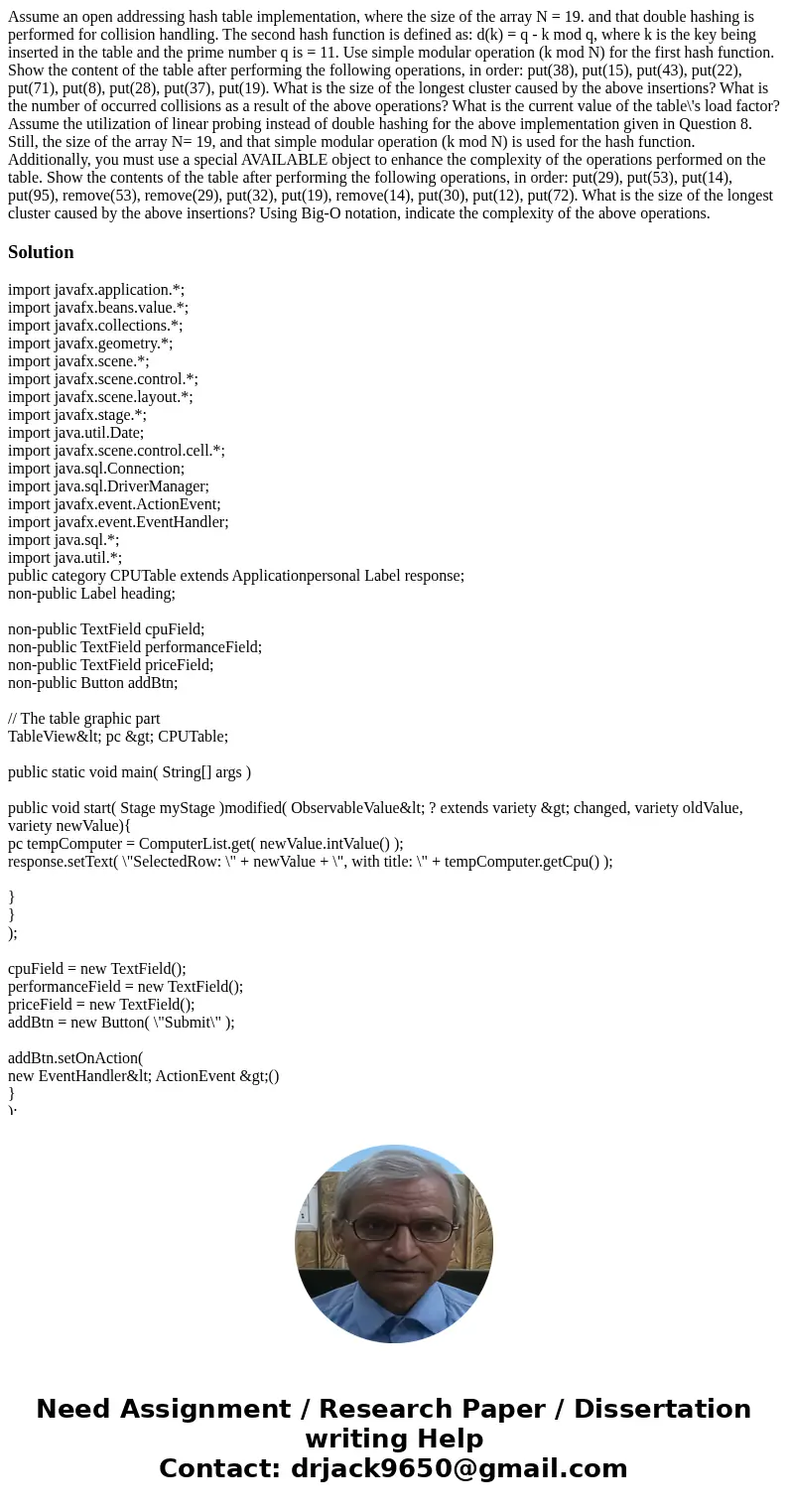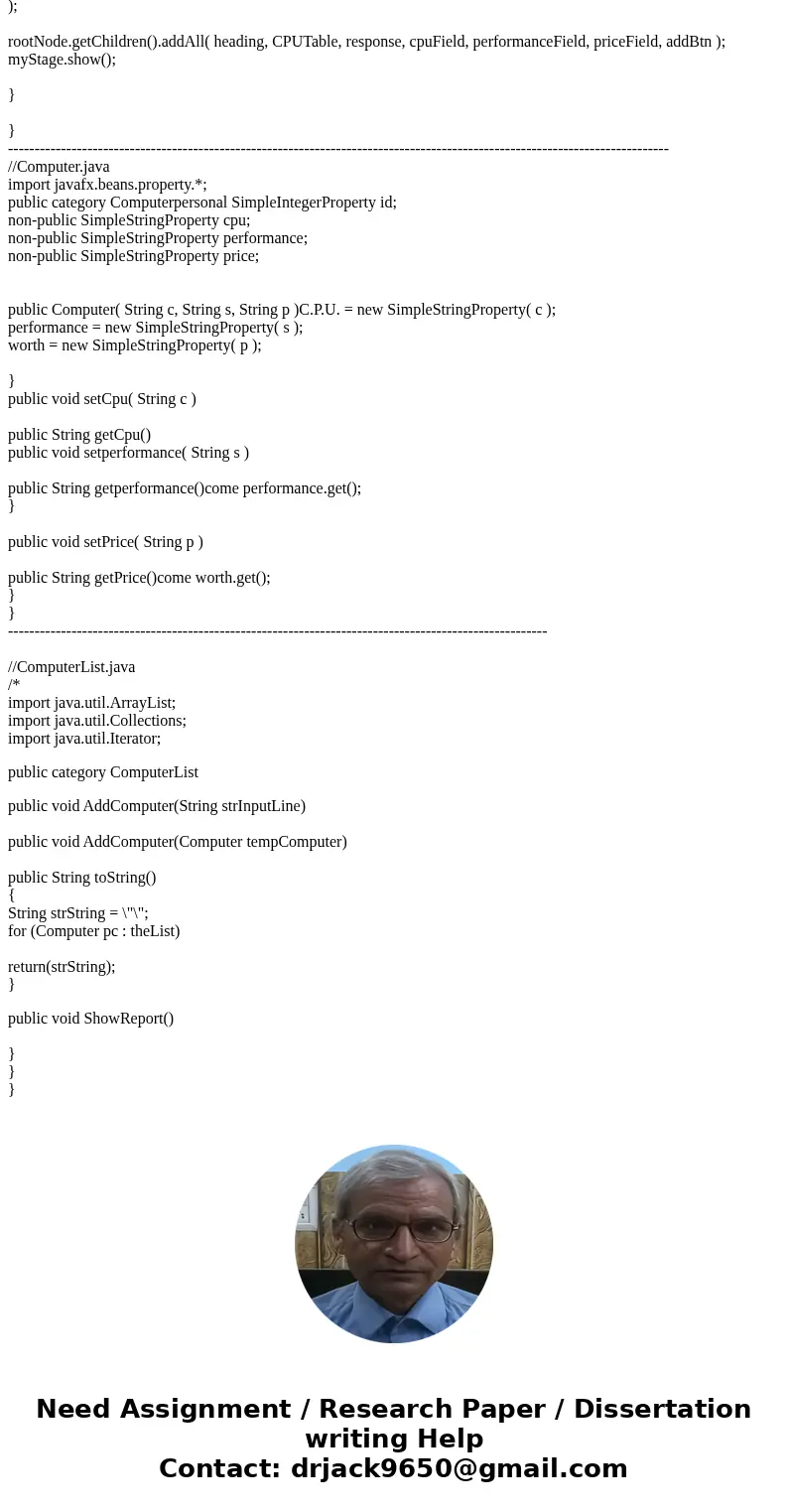Assume an open addressing hash table implementation where th
Solution
import javafx.application.*;
import javafx.beans.value.*;
import javafx.collections.*;
import javafx.geometry.*;
import javafx.scene.*;
import javafx.scene.control.*;
import javafx.scene.layout.*;
import javafx.stage.*;
import java.util.Date;
import javafx.scene.control.cell.*;
import java.sql.Connection;
import java.sql.DriverManager;
import javafx.event.ActionEvent;
import javafx.event.EventHandler;
import java.sql.*;
import java.util.*;
public category CPUTable extends Applicationpersonal Label response;
non-public Label heading;
non-public TextField cpuField;
non-public TextField performanceField;
non-public TextField priceField;
non-public Button addBtn;
// The table graphic part
TableView< pc > CPUTable;
public static void main( String[] args )
public void start( Stage myStage )modified( ObservableValue< ? extends variety > changed, variety oldValue, variety newValue){
pc tempComputer = ComputerList.get( newValue.intValue() );
response.setText( \"SelectedRow: \" + newValue + \", with title: \" + tempComputer.getCpu() );
}
}
);
cpuField = new TextField();
performanceField = new TextField();
priceField = new TextField();
addBtn = new Button( \"Submit\" );
addBtn.setOnAction(
new EventHandler< ActionEvent >()
}
);
rootNode.getChildren().addAll( heading, CPUTable, response, cpuField, performanceField, priceField, addBtn );
myStage.show();
}
}
-----------------------------------------------------------------------------------------------------------------------------
//Computer.java
import javafx.beans.property.*;
public category Computerpersonal SimpleIntegerProperty id;
non-public SimpleStringProperty cpu;
non-public SimpleStringProperty performance;
non-public SimpleStringProperty price;
public Computer( String c, String s, String p )C.P.U. = new SimpleStringProperty( c );
performance = new SimpleStringProperty( s );
worth = new SimpleStringProperty( p );
}
public void setCpu( String c )
public String getCpu()
public void setperformance( String s )
public String getperformance()come performance.get();
}
public void setPrice( String p )
public String getPrice()come worth.get();
}
}
------------------------------------------------------------------------------------------------------
//ComputerList.java
/*
import java.util.ArrayList;
import java.util.Collections;
import java.util.Iterator;
public category ComputerList
public void AddComputer(String strInputLine)
public void AddComputer(Computer tempComputer)
public String toString()
{
String strString = \"\";
for (Computer pc : theList)
return(strString);
}
public void ShowReport()
}
}
}


 Homework Sourse
Homework Sourse